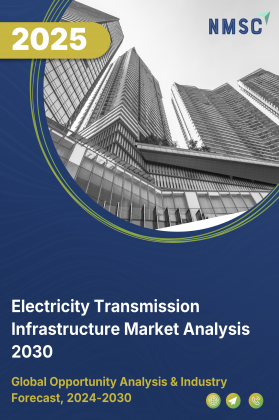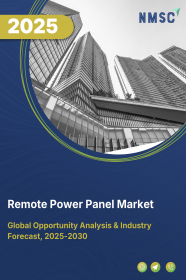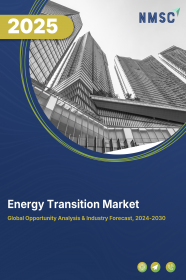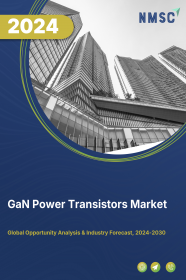
Electricity Transmission Infrastructure Market by Component (Cables & Conductors, Structures & Towers, Substations, Control & Protection Systems), by Voltage Level (Sub‑Transmission, Transmission, Extra‑High Voltage, & Ultra‑High & Super‑Grid), by Technology (AC Transmission, DC transmission, & Grid Modernization Technologies), by Application (Bulk Power Transmission, Cross-Border Interconnections, End User (Public Utilities, Independent Power Producers) – Opportunity & Forecast, 2024–2030.
Industry Overview
The global Electricity Transmission Infrastructure Market size was valued at USD 389.28 billion in 2024, and is anticipated to reach USD 408.08 billion in 2025 and is predicted to reach USD 516.62 billion by 2030 with a CAGR of 4.83% from 2025-2030.
The market is experiencing robust growth, driven by rising energy consumption, surging electricity demand and the accelerating adoption of renewable energy sources that necessitate network expansion. Massive investments in grid capacity and modernization initiatives backed by supportive government policies and public private partnerships are reinforcing the need for stronger, more resilient transmission systems.
Technological advancements in digital twins, dynamic line rating and advanced conductors are enhancing grid efficiency, reliability and scalability, while smart grid integration and real time monitoring solutions open significant future growth opportunities.
However, complex regulatory frameworks and escalating compliance costs continue to challenge project timelines and increase capital expenditure. Despite these hurdles, ongoing innovation in grid modernization and the transition to a cleaner energy mix promise to unlock long term value and global deployment prospects.
Rising Demand for Energy Consumption Propels the Growth of the Market
The rising energy demand is major driver of the market, driven by ongoing population growth resulting in higher energy consumption across residential, commercial and industrial purposes. As per the report published by International Energy Agency (IEA) in July 2024, predicts that global electricity consumption will grow rapidly over the 2024-2025 period, with a 4% increase expected in 2024. This surge in demand necessitates the expansion and upgrading of transmission infrastructure to effectively supply power to growing urban areas and developing regions.
Increasing Adoption of Renewable Energy Sources Drives the Demand for Expansion
Increasing adoption of renewable energy sources such as wind, solar and hydro is a significant driver of electricity transmission market. The integration of these sources requires expansion and enhancement of transmission networks for connecting them to main grid.
For instance, in December 2023, Adani Energy Solutions (AESL) undertook a major project to evacuate 7GW of renewable energy from the Khavda Renewable Energy (RE) park in Gujarat involving construction of 301 km transmission line. This initiative represents a broader effort to integrate renewable energy into the grid, highlighting the role of robust transmission infrastructure in supporting sustainable energy transitions.
Surging Electricity Demand Further Fuels Network Expansion
Growing electricity transmission infrastructures worldwide for efficiently distributing power from generation plants to end users is driving market growth by increasing demand for equipment and services, attracting investments and encouraging technological advancements.
For example, in January 2024, Mauritania received USD 289 from African Development Bank for the development of solar power plants and improve its energy system. Such expansions enhance energy distribution, facilitates renewable energy integration, and promotes economic growth by providing reliable power to expanding industrial, commercial, and residential areas, thereby driving the electricity transmission infrastructure market growth.
Regulatory Challenges and Compliance Costs Hinders Market Expansion
High capital costs pose a significant barrier to new projects in the market because building and upgrading high voltage lines and substations demands substantial upfront investment that many developers and utilities find difficult to secure. Exorbitant equipment and construction expenses coupled with extended lead times for specialized components can stretch procurement schedules and inflate overall budgets. As a result, project timelines are often delayed or scope reduced, hampering the pace of grid expansion even as demand for reliable, modern transmission networks continues to rise.
Technological Advancements in Grid Modernization Creates Future Growth Opportunities
On the contrary, the growing advancements in grid modernization is contributing to the market growth as it involves upgrading outdated systems with advanced technologies such as smart grids and high-voltage direct current (HVDC). For example, in April 2024, Tantalus Systems planned to modernize electrical grid in three U.S. states for upgrading their technology using new system called Tantalus Grid Modernization Platform. These enhances efficiency, reliability and capacity to manage higher energy loads.
Market Segmentations and Scope of the Study
The power transmission infrastructure market report is segmented on the basis of component type, voltage level, technology, deployment type, application, end-user, and region. On the basis of component type, the market is categorized into conductors & cables, towers & structures, substations, and control & protection systems. On the basis of voltage level, the market is divided into sub transmission (< 110 kV), transmission (110 – 400 kV), extra high voltage (500 – 800 kV AC; ±800 kV DC), and ultra high & super grid (> 800 kV AC; > ±800 kV DC). On the basis of technology, the market is segmented into AC transmission, DC transmission, and grid modernization technologies. On the basis of deployment type, the market is grouped into new construction (greenfield), grid upgrades & retrofits, and offshore transmission. On the basis of application, the market is categorized into bulk power transmission, renewable energy integration, cross-border interconnections, and grid resilience & security. Grid resilience & security includes cybersecurity hardening and extreme weather adaptation. On the basis of end-user, the market is segmented into public utilities, independent power producers (IPPs), and industrial consumers. Regional breakdown and analysis of each of the aforesaid segments includes regions comprising North America, Europe, Asia-Pacific, and Rest of the World (RoW).
Geographical Analysis
The electricity transmission infrastructure market share in North America is steadily growing driven by leads in grid modernization, leveraging policy support and funding for smart grid rollouts, HVDC projects, and digital substations.
For example, the U.S. launched Grid Resilience Innovative Partnership (GRIP) program aimed at enhancing and expanding the country’s electricity grids. These innovations boost system reliability and position the region for continued growth as renewables integration accelerates.
Moreover, regulatory support and government-backed initiatives aimed at strengthening grid resilience against extreme weather events and cyber threats are contributing to the robust growth of the transmission infrastructure market in North America.
Europe’s coordinated regulatory framework drives cross border interconnectors and offshore wind integration, underpinned by digitalization and predictive analytics. Collaborative projects among transmission operators enhance resilience and reinforce long term market prospects.
Asia-Pacific holds the dominant share in the industry and is expected to continue its dominance during the forecast period. For example, in January 2024, Union Power and New & Renewable Energy Minister R. K. Singh announced the development of 99 GW and 32 GW renewable energy capacity backed by an investment of USD 2.11 trillion. Addition to that, in March 2024, Sterlite Power partnered with Singapore's sovereign wealth fund GIC to develop green power transmission projects in India. Fuelled by rapid electrification and renewable expansion, Asia Pacific is the fastest growing transmission market. High voltage AC/DC build outs and smart grid upgrades ensure stability and efficiency, unlocking substantial growth potential.
The market is emerging in the Rest of the World, including Latin America, the Middle East, and Africa. The region’s market is defined by grid extension efforts, regional power pools, and mobile enabled monitoring solutions. Emerging regulatory reforms and international partnerships are driving modernization, setting the stage for dynamic growth ahead.
Strategic Innovations Adopted by Key Players
Key players in the electricity transmission infrastructure industry are strategically focusing on technological innovation and partnerships to capture a larger market share and tap into the significant growth potential of this market. Recent developments include successful high-speed trials and infrastructure advancements, such as
-
In August 2024, Adani Power received National Company Law Tribunal (NCLT) approval to acquire Lanco Amarkantak Power Limited (LAPL) for expanding its thermal power generation capacity in India. This acquisition stimulates economic activity supporting industrial growth and infrastructure development.
-
In January 2024, VINCI Energies partnered with Senelec, Senegal's national electricity company for construction of transmission lines and eight very-high-voltage transformer stations to enhance the country's electrical infrastructure.
-
In December 2022, Tata Power expanded its business reach by acquiring Bikaner-III Neemrana-II Transmission, a project special purpose vehicle (SPV) set up by Power Finance Corporation’s subsidiary of PFC Consulting in Rajasthan. The project involves the construction and operation of transmission lines and substations in the state.
-
Iberdrola has committed approximately USD 5.87 billion to grid expansion in 2025, as part of a broader USD 44.69 billion strategic plan through 2026, aiming to lead the electrification revolution
-
CyrusOne & E.ON have partnered to deploy 61 MW of local generation by 2029 at CyrusOne’s Frankfurt campus doubling IT capacity to 126 MW and integrating hydrogen ready, heat recovery systems eligible for green certificates.
-
Siemens Smart Infrastructure is partnering with DB Energie to modernize Germany’s 16,000 km railway power network by deploying its advanced Spectrum Power 7 grid-control software and associated systems, replacing the older version. The upgrade aims to enhance network complexity management, cybersecurity, and operator efficiency, with full deployment by 2028. This collaboration supports Deutsche Bahn’s 2040 climate-neutrality goal by ensuring a resilient and efficient transmission grid for rail operations.
Key Benefits
-
The report provides quantitative analysis and estimations of the market from 2024 to 2030, which assists in identifying the prevailing industry opportunities.
-
The study comprises a deep-dive analysis of the current and future electricity transmission infrastructure market trends to depict prevalent investment pockets in the sector.
-
Information related to key drivers, restraints, and opportunities and their impact on the market is provided in the report.
-
Competitive analysis of the players, along with their market share is provided in the report.
-
SWOT analysis and Porters Five Forces model is elaborated in the study.
-
Value chain analysis in the market study provides a clear picture of roles of stakeholders
Electricity Transmission Infrastructure Market Key Segments
By Component Type
-
Conductors & Cables
-
Overhead Conductors
-
Underground/Submarine Cables
-
-
Towers & Structures
-
Lattice towers
-
tubular steel poles
-
Composite Material Structures
-
-
Substations
-
Transformers
-
Switchgear
-
Reactive Power Compensation
-
-
Control & Protection Systems
-
SCADA/EMS
-
Phasor Measurement Units
-
Relays & Circuit Breakers
-
By Voltage Level
-
Sub‑Transmission (< 110 kV)
-
Transmission (110 – 400 kV)
-
Extra‑High Voltage (500 – 800 kV AC; ±800 kV DC)
-
Ultra‑High & Super‑Grid (> 800 kV AC; > ±800 kV DC)
By Technology
-
AC Transmission
-
Standard HVAC
-
Flexible AC Transmission
-
-
DC Transmission
-
Line-Commutated Converters
-
Voltage-Sourced Converters
-
-
Grid Modernization Technologies
-
Dynamic Line Rating
-
Advanced Conductors
-
Digital Twin Systems
-
By Deployment Type
-
New Construction (Greenfield)
-
Grid Upgrades & Retrofits
-
Capacity Expansion
-
Asset Replacement
-
-
Offshore Transmission
-
Wind Farm Integration
-
Island Interconnections
-
By Application
-
Bulk Power Transmission
-
Renewable Energy Integration
-
Cross-Border Interconnections
-
Grid Resilience & Security
-
Cybersecurity Hardening
-
Extreme Weather Adaptation
-
By End-User
-
Public Utilities
-
Independent Power Producers (IPPs)
-
Industrial Consumers
-
Data Centers
-
Metals/Mining
-
By Region
-
North America
-
The U.S.
-
Canada
-
Mexico
-
-
Europe
-
The UK
-
Germany
-
France
-
Italy
-
Spain
-
Denmark
-
Netherlands
-
Finland
-
Sweden
-
Norway
-
Russia
-
Rest of Europe
-
-
Asia-Pacific
-
China
-
Japan
-
India
-
South Korea
-
Australia
-
Indonesia
-
Singapore
-
Taiwan
-
Thailand
-
Rest of Asia-Pacific
-
-
RoW
-
Latin America
-
Middle East
-
Africa
-
Key Players
-
Iberdrola
-
E ON
-
Siemens Energy
-
SGCC
-
ACWA Power
-
China Southern Power Grid
-
Enel
-
GE vernova
-
Tatapower
-
Adani Group
-
KEPCO
-
Engie
-
Nextera Energy
Report Scope and Segmentation
|
Parameters |
Details |
|
Market Size in 2025 |
USD 408.08 Billion |
|
Revenue Forecast in 2030 |
USD 516.62 Billion |
|
Growth Rate |
CAGR of 4.83% from 2025 to 2030 |
|
Analysis Period |
2024–2030 |
|
Base Year Considered |
2024 |
|
Forecast Period |
2025–2030 |
|
Market Size Estimation |
Billion (USD) |
|
Growth Factors |
|
|
Countries Covered |
28 |
|
Companies Profiled |
15 |
|
Market Share |
Available for 10 companies |
|
Customization Scope |
Free customization (equivalent up to 80 working hours of analysts) after purchase. Addition or alteration to country, regional, and segment scope. |
|
Pricing and Purchase Options |
Avail customized purchase options to meet your exact research needs. |

















 Speak to Our Analyst
Speak to Our Analyst





















